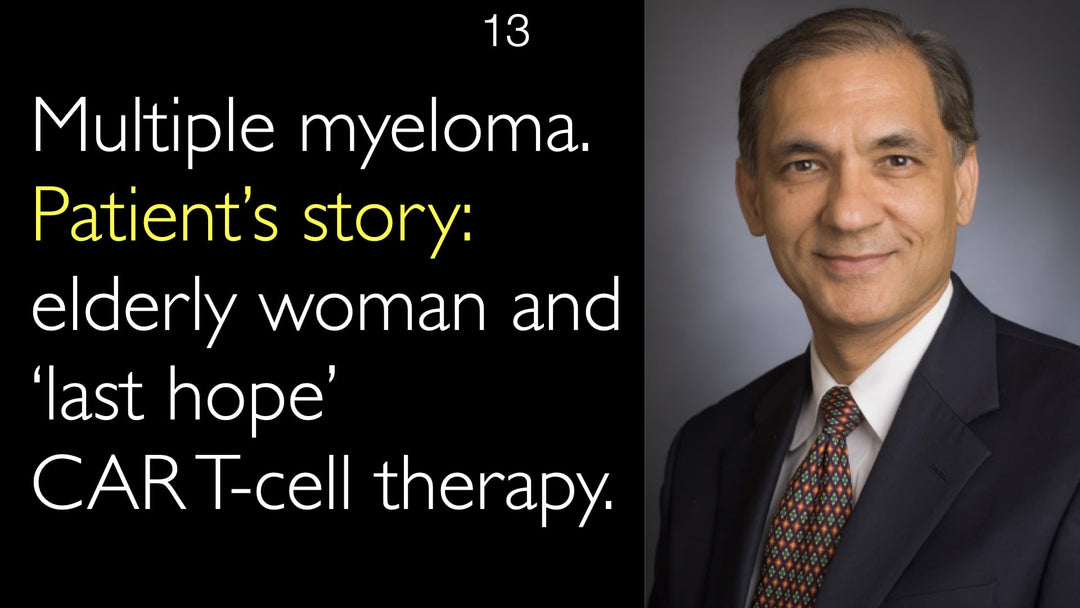Dr. Anton Titov, MD, explores the rare but serious complication of bleeding from acquired von Willebrand disease.
Understanding MGUS: From Incidental Finding to Multiple Myeloma Risk
Jump To Section
- MGUS and Multiple Myeloma Link
- How MGUS is Discovered
- Acquired von Willebrand Syndrome
- Monitoring MGUS Patients
- Age and Prognosis Factors
- Full Transcript
MGUS and Multiple Myeloma Link
MGUS, or monoclonal gammopathy of unknown significance, is a precancerous blood condition. Dr. Pier Mannucci, MD, clarifies that most multiple myeloma cases are preceded by MGUS. However, he emphasizes a critical point. Not every patient diagnosed with MGUS will develop the blood cancer multiple myeloma.
The annual risk of progression from MGUS to multiple myeloma is approximately 1% per 100 patient-years. This statistic highlights the condition's unpredictable nature. Dr. Pier Mannucci, MD, notes it is difficult to predict which individuals will progress.
How MGUS is Discovered
Dr. Pier Mannucci, MD, explains that MGUS is frequently an incidental finding. Patients are typically asymptomatic and feel perfectly well. The condition is often discovered during routine blood tests ordered for other reasons.
Serum protein electrophoresis is a common test that reveals MGUS. This test might be part of a general checkup or a prerequisite for radiological examinations. Dr. Anton Titov, MD, and Dr. Mannucci agree this is the most frequent diagnostic pathway.
Acquired von Willebrand Syndrome
A serious but rare complication of MGUS is acquired von Willebrand syndrome. This bleeding disorder can be a presenting sign. Dr. Pier Mannucci, MD, states it is not a frequent cause for MGUS diagnosis.
He provides a clinical example of a young man with a myeloproliferative disorder. His condition was discovered specifically because he developed acquired von Willebrand syndrome and experienced bleeding. This illustrates how the syndrome can unmask an underlying hematologic condition.
Monitoring MGUS Patients
Management of MGUS centers on vigilant monitoring rather than immediate treatment. Dr. Pier Mannucci, MD, recommends annual checkups for most patients. He emphasizes that patients with MGUS do not deserve any treatment unless progression occurs.
Monitoring frequency can depend on the type of MGUS. Dr. Pier Mannucci, MD, notes that the IgA type of MGUS tends to progress to multiple myeloma more frequently. These patients may require more vigilant observation than those with other MGUS types.
Age and Prognosis Factors
The patient's age at MGUS diagnosis significantly impacts clinical management. Dr. Pier Mannucci, MD, explains that younger patients, such as those around age 50, have a different prognosis. Their longer life expectancy inherently increases their statistical risk of progression over time.
Dr. Anton Titov, MD, and Dr. Mannucci discuss the biological reason. A younger patient's clone of abnormal blood cells has more time to grow and potentially evolve into cancer. This contrasts with older patients in their 60s, 70s, and 80s, for whom the statistical risk is lower within their remaining lifespan.
Full Transcript
Dr. Pier Mannucci, MD: It's very interesting that you mentioned MGUS, monoclonal gammopathy of unknown significance, because cases of multiple myeloma, a blood cancer, are usually preceded by monoclonal gammopathy of unknown significance. However, it's important to emphasize that not all patients with MGUS will develop multiple myeloma. On the other hand, most patients with multiple myeloma had MGUS in the past.
So MGUS is a very interesting condition.
Dr. Anton Titov, MD: How do people usually find out that they have MGUS? Because they tend to bleed, have they been discovered to have an acquired form of von Willebrand disease? MGUS is a very interesting medical condition.
Dr. Pier Mannucci, MD: You explained it very well. The situation with MGUS, as I said, originally MGUS was called benign monoclonal gammopathy. MGUS is called "of uncertain significance" because 1% per 100 patient-years may develop multiple myeloma. They are also way too unpredictable; it is not easily predicted who will develop multiple myeloma.
Sometimes MGUS is discovered by chance, as you know, by carrying out, for instance, serum electrophoresis. For the sake of example, in this country, but I also think in other countries, to receive a referral to do radiology testing, you need to have some examinations, including serum electrophoresis. So MGUS is discovered, particularly in older people, often by chance.
But as you mentioned, sometimes acquired von Willebrand disease is diagnosed because usually it doesn't give any signs. MGUS is discovered by chance because until MGUS evolves, which happens very seldom, as you mentioned, towards multiple myeloma, they have no signs, and a patient is perfectly well.
But sometimes the problem is, as you mentioned, the consequences, such as the appearance of acquired von Willebrand syndrome. I'm not saying that is a frequent cause of diagnosis of MGUS. The much more frequent situation is when patients with MGUS are diagnosed by chance during a routine exam.
It may be ordered for a checkup or need a blood test to carry out some radiological exams. Usually, they are asymptomatic of the problem. We don't know very clearly who will progress to multiple myeloma usually.
MGUS of IgA type tends to progress to multiple myeloma more frequently. So patients with MGUS of IgA type need more frequent monitoring. But usually, I recommend monitoring.
By the way, I see very many of these patients. As usual, I tend to reassure them; I don't do diagnostic test exams more often than once a year, particularly if they are over a certain age. Certainly, the problem is when patients with MGUS are younger, say, 50.
Because then, of course, the likelihood, just as a matter of time, for MGUS to progress to multiple myeloma is by definition more likely. It is simply because they have a longer life expectancy. Patients in their 60s, 70s, 80s usually have no treatment for them. They don't deserve any treatment.
Not all patients with MGUS, of course, have acquired von Willebrand syndrome. But, for instance, I've recently seen a young man who has a myeloproliferative disorder, and that was discovered because of the acquired von Willebrand syndrome.
Especially in the younger age, there are several indicators for MGUS progress. Patients with MGUS at a younger age have a worse prognosis simply because they are more likely to be exposed to the risk. That is only a matter of statistics.
Dr. Anton Titov, MD: Right, because the clone of blood cells grows for a longer time.
Dr. Pier Mannucci, MD: Yes, because life expectancy is different from the levels seen in 60-, 70-, 80-year-old patients.







